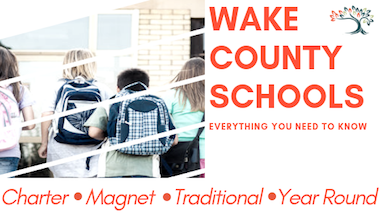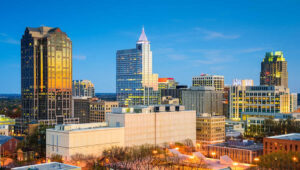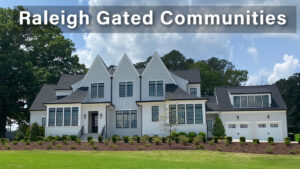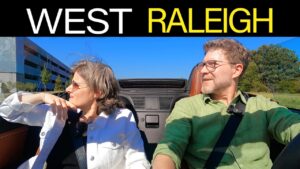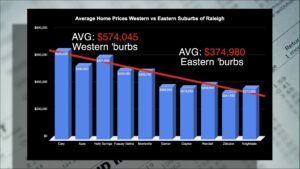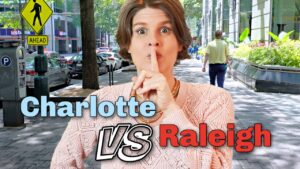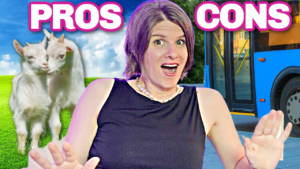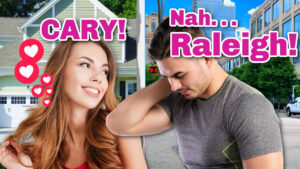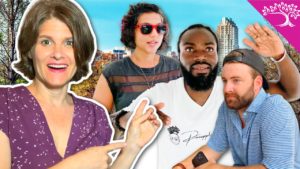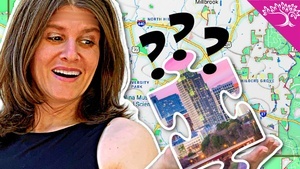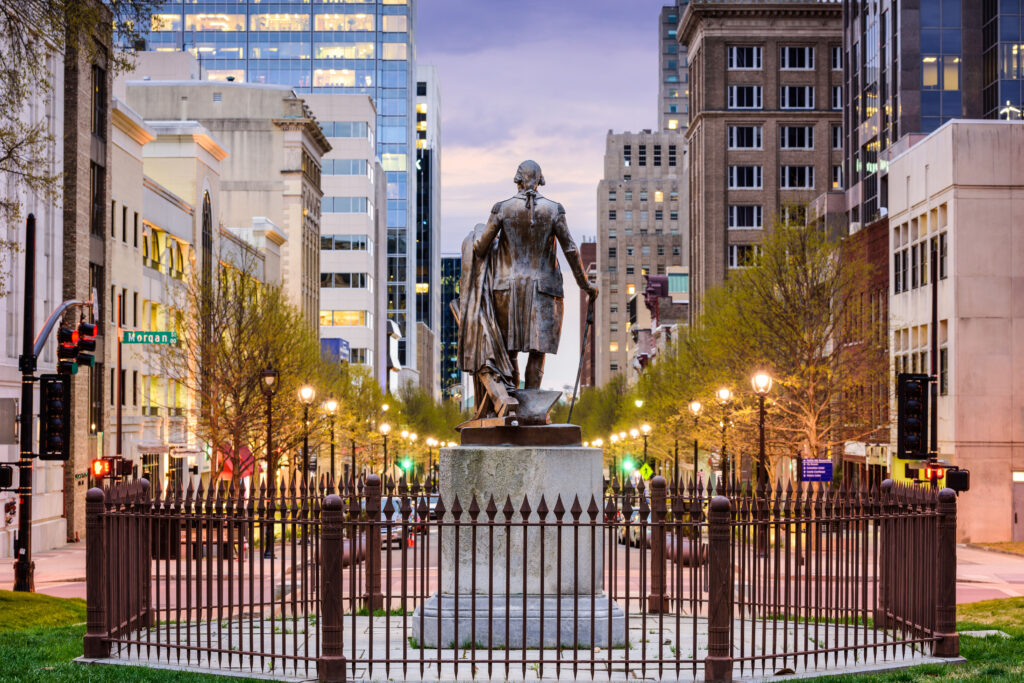
Living in Raleigh, NC
Is Raleigh, NC a good place to live? Are you moving to Raleigh, NC? Lots of people call me asking that question so I’m going to share with you the things that are most important to people who are thinking about moving to Raleigh, NC. These are the things that most frequently come up in conversations I have with people who call me. You can click on the topics to read about the things that are most important to you. If you have questions about moving to Raleigh, don’t hesitate to give us a call. We’re always happy to talk with you!
Living in Raleigh NC Contents
If you are moving to Raleigh, North Carolina or just wondering if Raleigh, NC is a good place to live, this is a good place to start. You can also take a look at our videos about living in Raleigh, NC. If you have questions about moving to Raleigh, NC; don’t hesitate to give us a call!
And if you’re thinking of moving to the Raleigh, NC area. don’t forget to explore all of our City Guides and learn about all the other great towns and cities near Raleigh, NC.
Raleigh, NC Affordable Cost of Living
The cost of living in Raleigh, NC is about 2.5% higher than the national average. Remember that the average includes much lower cost of living places like Iowa where the median home price is under $200,000. Here in Raleigh the current median home price is $420,000, which is very affordable compared to the large cities where the majority of people are moving here from.
But much less affordable than Iowa. Of course, Iowa’s top paying job is a truck driver. So you have to take into consideration the industry in a particular area when thinking about the cost of living. It’s all relative.
For an up to the moment report of the Raleigh housing market, see the Raleigh Market Report page. You can also check out our look into the changing nature of the Raleigh market in our post here.
Culture and Community: What Makes Living in Raleigh Unique
When people move to Raleigh, NC; they generally come to stay. I don’t often meet people who move here and hate it. And this has a big impact on the character of Raleigh. Raleigh has become a modern day cultural melting pot. Washington, D.C., San Francisco, New York, and Los Angles are the top inbound migration spots.
But, don’t think of Raleigh as a city like New York, Boston, Los Angeles, or San Francisco. At its heart, Raleigh is still a big southern town with some unique personality traits.
Raleigh is a tech hub, a college town, and a government center. All of these elements contribute to Raleigh’s dynamic nature. It is a city on the move.
Raleigh is a tech hub
Ever since the establishment of Research Triangle Park in the 1950’s, Raleigh has been a growing tech hub. Today it is recognized as one of the top tech hubs in the nation. And if that MetaVerse thing ever takes off, Raleigh is poised to capitalize on it!
From giants like Red Hat to companies like GRAIL that develops blood tests to detect cancer, Raleigh’s low cost of living and ready supply of tech talent makes it an ideal place for companies to grow. That is part of the reason Apple chose the Triangle to build its new campus. There is an innovative spirit that pervades Raleigh. And many people move to Raleigh for the tech scene or because it’s a good place to launch a startup, with all the tech talent in the area.
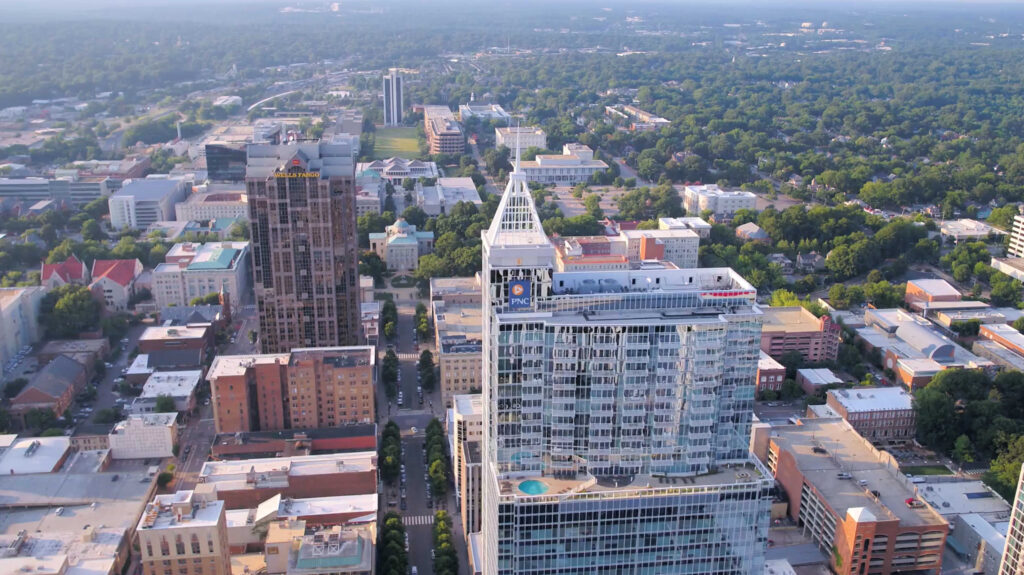
Raleigh is a College Town
The Research Triangle area is defined by the three major research universities, NC State, Duke, and UNC Chapel Hill. But Raleigh is home to not just NC State, but Meredith College, Peace College, Campbell University School of Law, St. Augustine’s University, and Shaw University.
Not only do these schools provide ready talent to local businesses and start-ups looking for qualified job applicants, they also create the space for local businesses to serve these communities. These colleges and universities give Raleigh a youthful vitality. If you’re moving to Raleigh you should know that while we do have a lot of universities, Raleigh doesn’t behave like a college town. The city is big enough that the ebb and flow of university life doesn’t impact the regular flow of traffic or activity the way it does in smaller cities like Charlottesville, VA.
Raleigh is a Government Center
Raleigh is the state capital of North Carolina. It is home to the State Fair, the North Carolina Art Museum, the North Carolina Museum of Natural Sciences, and the North Carolina Museum of History.
Because it is the capital city and home to the state legislature, the governor, and the state supreme court, what happens in Raleigh affects all of North Carolina.
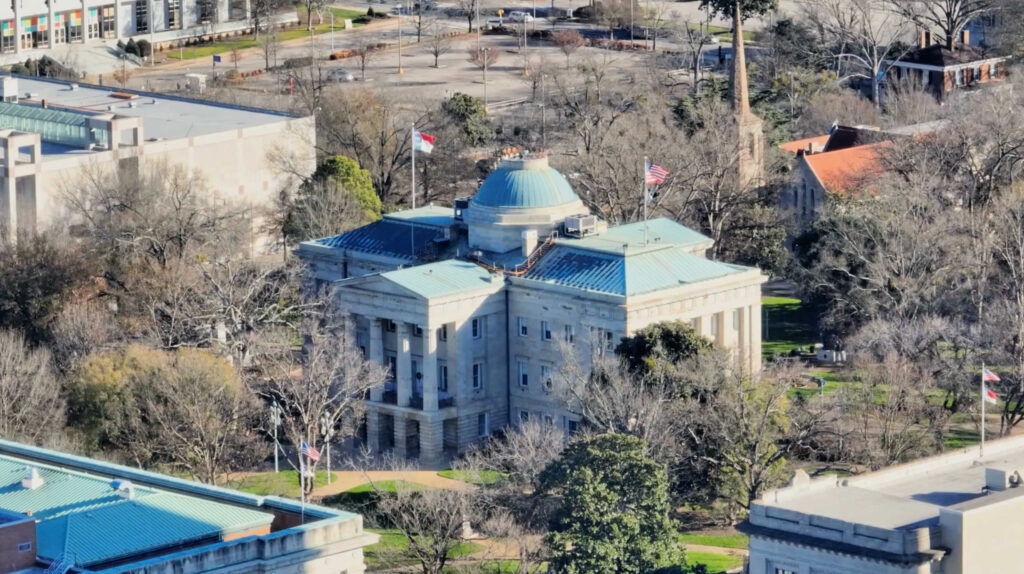
The people in Raleigh are friendly. Yes, they really are! When we go downtown and stop to talk to people, they are always happy to talk about Raleigh and what they love most about it. Most people will tell you that Raleigh is a city that lives like a town.
It’s big enough, and diverse enough, to support a vibrant community in the arts, the sciences, the restaurant and nightlife scene, while small enough to let you run into people you know on the street. If you want to hear from them yourself, check out this video about why people love Raleigh.
Raleigh has a slower pace of life than most other major cities. The city is committed to growing its impressive parks and greenway system and creating those small spaces that make daily life just a little more fun.
Raleigh, North Carolina
Finding a Job in Raleigh, NC
If you want to move to Raleigh but don’t have a job yet, you’ll be happy to know that CNBC ranked North Carolina the number one state for business in 2022. WalletHub ranked Raleigh as the best place to find a job in North Carolina. Because Raleigh’s economy is diversified between technology, academics, and government employment, the job market in Raleigh is resilient and growing. Let’s be honest, when was the last time government related jobs shrunk!
Raleigh’s unemployment rate was 3.5% in December 2022.
It’s easy to live in Raleigh, NC and work anywhere in the Triangle. Job prospects for future Raleigh residents aren’t confined just to the city limits.
Because Research Triangle Park doesn’t have many residential properties many people who work in RTP chose to live in Raleigh. (And the properties they are building in RTP are primarily rentals.) Commute times from Raleigh to RTP are considerably less than most major cities.
Commuting if You Live in Raleigh, NC
BestPlaces.net reports that the average Raleigh resident has a 21 minute commute. Compare that to San Francisco’s average commute time of 33 minutes. . . and I don’t know what you get. I’m a little suspicious of these times. Google tells us that if you live in North Raleigh and need to commute to RTP it will take you anywhere from 20 to 40 minutes on a Monday morning.
If you’re moving to Raleigh for a job requires travel, you will find that Raleigh Durham International Airport (RDU) is a great place to travel from. The new terminal is one of the nicest airports I’ve been through. It is easy to navigate to your terminal, easy to get into and out of, and super convenient from any area in the Triangle.
If you want to be really convenient to the airport, try the western side of town.
Everything to Know About Schools in Raleigh, NC
Raleigh residents are zoned to Wake County Public Schools, the largest public school district in North Carolina. Niche.com ranks Wake County Schools as #1 in the state for student athletes and #7 in the state overall.
Wake County Schools offers traditional calendar schools, year-round schools, and magnet schools. Charter Schools, like the famous Raleigh Charter High Schools, are also common in Wake County.
There are many well-regarded private schools in the area as well. You might explore Ravenscroft, St. David’s School, St. Mary’s School, Trinity Academy, or Cardinal Gibbons High School.
If you need all the nitty-gritty of Wake County Schools, our blog post on Wake County Schools is an absolute must read! There’s just too much to know to put it all here.
Move to Raleigh for the Weather
If you don’t like the weather, just wait a minute. It will change. Seriously! You really can have snow one week and 60 degrees the next. Not that snow is common in Raleigh. It isn’t. But we do have four fabulous seasons.
Let’s start with the scariest season, late summer. By July it is getting hot and humid with the average daytime highs of 90 degrees. But, by mid-September the highs have dropped to the low 80’s. Even though the summer heat is short-lived, and honestly isn’t any worse than any city on the east coast, the height of hurricane season in North Carolina is from mid-August to late September. Some people who think about moving to Raleigh are concerned about hurricanes and tornadoes, but honestly they are much less impactful than you may think.
Hurricanes in Raleigh
Hurricanes can impact Raleigh with heavy rains and high winds. While long-time Raleigh residents can tell their own stories about “the big one,” major hurricane impacts in Raleigh are not common, but stocking up on bread, milk, and gasoline for your generator isn’t a bad idea when the news tells you to get ready.
But honestly, these are so rare that it really shouldn’t be something you figure into your equation. What we do love about summer in Raleigh is that it is a quick day trip to the North Carolina beaches. Wrightsville Beach is less than a two hour drive.
Great Weather in Raleigh, NC
Fall in Raleigh is my favorite time of the year. The humidity is low, the skies are blue, and the trees are decked out in red and gold. The many great parks in Raleigh are a joy to experience in the fall.
But for the full fall experience, you need to take a trip to the North Carolina Mountains. The Blue Ridge Parkway and the Smoky Mountain National Park are the top two most visited national parks in the country with over 14 million visitors each in 2021!
Just for comparison, The Grand Canyon National Park only had 4.5 million visitors in 2021. You know there’s got to be something good there. And don’t worry about the crowds, there are plenty of places to go in the mountains where you’ll wonder where civilization disappeared to.
The mountains are less than 3 hours away in Boone, and the Smoky Mountains are about a 4.5 hour drive from Raleigh.
Winter in Raleigh
Winter in Raleigh is mild. The coldest average high temperatures happen in January when the thermometer plunges to an average high of 50 degrees. But by April, we’re back into the 70’s.
Raleigh averages about six inches of snowfall in a normal year. Some years we might not see any. However, back in 2000, Raleigh saw up to 24 inches of snow in some locations. I wasn’t here for that but it hasn’t happened since!
But after winter (such that it is) comes spring and all the flowers and flowering trees come back to life and can make Raleigh look like something out of a Dr. Suess book with all the pink trees.
Local History
Raleigh was officially founded in 1792 to serve as the state capital. It is one of only a few cities that was built from the ground up to serve as the seat of government. The location of Raleigh was chosen, in part, to protect it from attacks by sea. So unlike many other cities, it was not built around navigable water. It was a good idea back then, but we kind of wish we had a river today!
Raleigh has since grown to border the Neuse river, so if river life is what you are looking for, you might want to check out Wake Forest. The City of Raleigh was spared the destruction of many other southern cities during the Civil War when the city voluntarily surrendered at the end of the war and promised no resistance to General Sherman’s army.
Raleigh remained a small city until the establishment and growth of Research Triangle Park in 1959. In 1960 there were 100,000 residents in Raleigh. Today there are just over 480,000 in the city proper and 1.4 million in the Raleigh Cary metro area. That number is expected to grow to 2.6 million by 2060. Behind only Austin, TX, the Raleigh Cary Metro is the 2nd fastest growing metro in the country.
Along with that population growth has come a revitalized downtown and the transformation of older residential parts of the city into innovative mixed-use developments like North Hills and the upcoming Midtown Exchange.
Raleigh’s Housing Market
Like any other metro area, Raleigh’s housing market ranges from downtown condos, to historic homes, to single family suburban homes, to large master planned communities. And we can certainly help you find your next home no matter your preference.
But a little history and a general overview of the market can really help. For a long time Raleigh was known for its inexpensive housing. Just 20 years ago the median home price in Raleigh was below the national average and appreciating below the national average.
Is Living in Raleigh still a good deal?
Over the last several years, Raleigh’s home prices have risen above the national average at a faster rate than the national average. So, is Raleigh still a good deal? To some degree Raleigh is no longer a well kept secret.
To see what the Raleigh housing market looks like right now, visit our Market Updates Posts to get housing data and commentary for Raleigh and the surrounding area.
Over 70 people are moving into the Triangle region every day.
But the recent home value increases have reflected a correction from the low appreciation rates early in the 21st century. Raleigh’s growth has also added value to homes.
Compared to the steal Raleigh homes once were, today’s prices seem pretty high. BUT compared to the cities that people are leaving to come to Raleigh, Raleigh is still a GREAT deal.
If you’re serious about a move to Raleigh, NC, you really need to give me a call. We can talk about what you want and what you can get with your budget. You can search local housing inventory throughout this site. But you might want to start your home search here on our Search Page.
Where to live in Raleigh?
Where are the best places to live in Raleigh, NC? Of course, that all depends on what kind of life you want to live. Do you want to walk to downtown restaurants? Do you want a city park within walking distance? Is golf what you’re looking for? Maybe you really want some space to spread out.
Fortunately, there really is a wide variety of options in Raleigh proper. There are even more options if you consider the many suburbs close to Raleigh.
Whether you want the famous greenways of Cary, the funky vibe of Fuquay-Varina, the master-planned community in Wendell, or the proximity to Falls Lake in Wake Forest, you are always less than 30 minutes from downtown Raleigh.
Keep in mind that Raleigh is still a small city and all the different parts we talk about below are really right next to each other! You can browse all homes for sale in Raleigh here, or explore different Triangle locations here.
ITB
Inside the beltline (ITB) is technically all of Raleigh inside the I-440 Beltline that circles the city. Practically speaking, ITB is the northwest quadrant of the city. It is dominated by older neighborhoods with both historic houses and new construction homes taking the place of smaller homes that have outlived themselves.
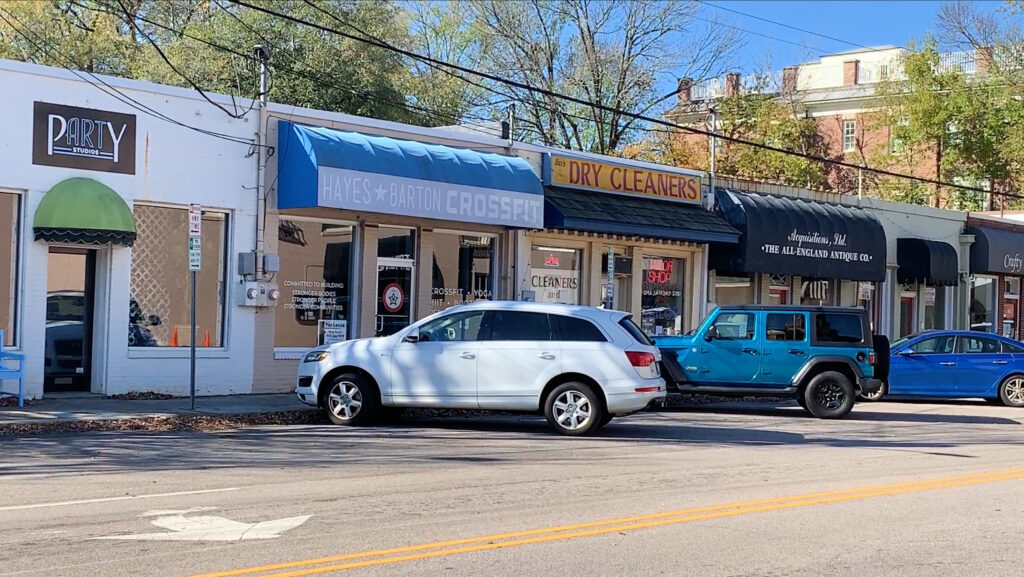
ITB is valued for its close proximity to downtown and the area’s best shopping. Homes in this area command a premium, with lot values in the $1 million range. Hayes Barton and Five Points are popular neighborhoods in this part of Raleigh. You can find homes for sale in ITB here.
West Raleigh
West Raleigh is home to NC State University. Typically it is less costly than the homes just to the north. But, residents here enjoy the same close proximity to downtown and shopping in the Village District. Dix Park, Lake Johnson, the North Carolina Art Museum, and the PNC arena are here on this side of town.
The PNC arena (home to NC State Basketball and the Carolina Hurricanes) is being eyed for a major transformation. Developers are looking to capitalize on the venue and its close proximity to RDU.
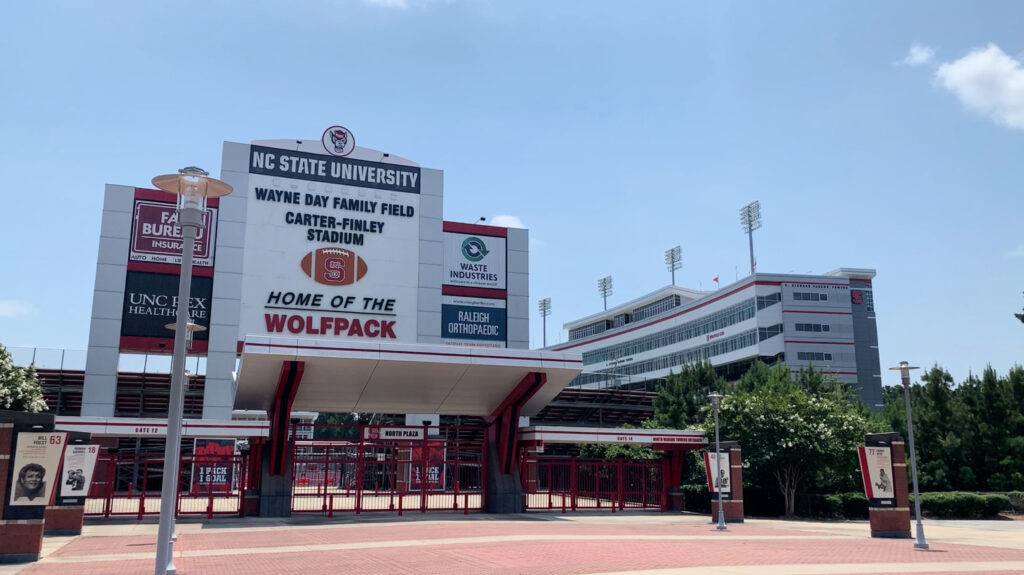
You’ll find an old-fashioned carousel and train rides for the kids at Pullen Park. The State Farmer’s Market is just a minute off I-40 for great access to great home-grown North Carolina produce. REX Hospital is also on the west side of Raleigh.
You can find homes for sale in West Raleigh here. Or if you really want to be close to the Village District, try this quick search. Or if a home in Northwest Raleigh and the Umstead area surrounding Umstead Park is more your style, search here.
Downtown Raleigh
Downtown Raleigh is home to the state government, the museum district, the Warehouse District (think old warehouses converted into cool stuff like food-halls), Red Hat Amphitheater, Shaw University, and the Duke Energy Center for the Performing Arts.
You can enjoy the North Carolina Symphony at Meymandi Concert Hall and the North Carolina Ballet at Raleigh Memorial Auditorium. Housing is limited in downtown, but Raleigh is now seeing new condo developments in the downtown area.
But remember, Raleigh is small, so living close to downtown itself isn’t too different from living in downtown. You can find homes for sale in Downtown Raleigh here.
East Raleigh
East Raleigh is home to the famous neighborhoods of Mordecai (pronounce it mor-de-kee) and Historic Oakwood. If you want to live in Raleigh, NC and have a historic home, these neighborhoods might be for you. These historic neighborhoods have seen a lot of rehab in recent years. Residents who are looking for that old-fashioned city feel, within walking distance to downtown, have been remodeling.
Also, builders have been expanding the area with a unique architectural approach to blending the old and the new.
Oh, and you can walk to the Krispy Kreme on Peace street from these neighborhoods! If you’re in the neighborhood, keep an eye out for when the “hot doughnuts” sign is on. That’s the time to go.
Peace University, St. Augustine University, and the WakeMed Raleigh Hospital are also here on the east side of town. You can find homes for sale in East Raleigh here.
North Raleigh
North Raleigh is the area between the I-440 Beltline and the town of Wake Forest. This area has developed in typical suburban fashion with retail developments lining the major arteries and subdivisions and parks existing between them.
Northridge Country Club, Falls River, and Wakefield Plantation are three large planned communities in North Raleigh. The new mixed use developments of North Hills and Midtown are just north of the I-440 Beltline. You can find homes for sale in North Hills and Midtown here.
Living in North Raleigh puts you in close proximity to the recreational opportunities at Falls Lake. There are several nature preserves in this part of the city as well.
The Durant Nature Preserve and the Annie Louise Wilkerson Nature Park give you the opportunity to get out and enjoy some unspoiled natural beauty.
Shelley Lake park and Lake Lynn are popular destinations in North Raleigh as well.
You can find homes for sale in North Raleigh here. If you decide Raleigh isn’t for you, you might want to learn the differences between Raleigh and Charlotte.
Raleigh Skyline
Shopping in Raleigh
Just keeping it real here, Raleigh is no NYC when it comes to shopping. BUT that doesn’t mean that you’re in a shopping desert either. But don’t move here for haute couture.
- The Village District near downtown,
- North Hills Mall, just north of the I-440 Beltline in North Raleigh,
- and the two major malls in Raleigh: Crabtree Valley Mall to the west and Triangle Town Center to the north.
There really aren’t major shopping areas in south or east Raleigh. But, the White Oak Shopping District in Garner serves points south of Raleigh.
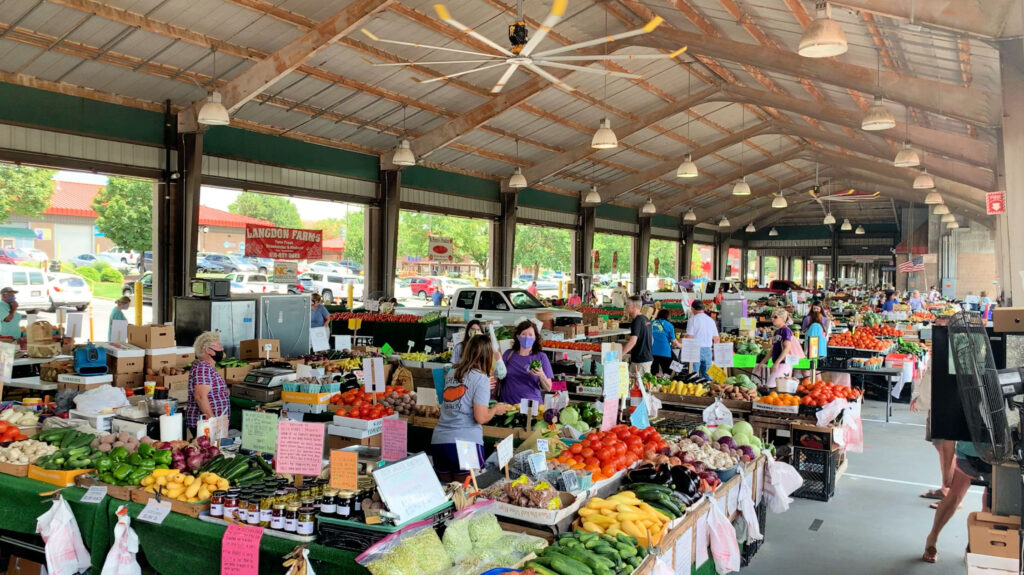
Village District Shopping
The Village District, formerly known as Cameron Village, is a neat collection of stores and restaurants. It has a more unique flavor than typical mall offerings. Boutique clothing shops such as Kannon’s, Uniquities, The Impeccable Pig, Madison, along with national menswear store Alton Lane, create an upscale shopping experience.
North Hills Shopping
The North Hills Shopping area was once a simple enclosed mall. Raleigh developer John Kane tore down the mall and built a mixed use mecca around the old mall site.
Today, high rise office buildings, dense residential, restaurants, a hotel and a grocery store, along with the many retail stores, stand as an image of Raleigh’s future. (Again, being honest, many locals feel like this development ruined the formerly residential area.)
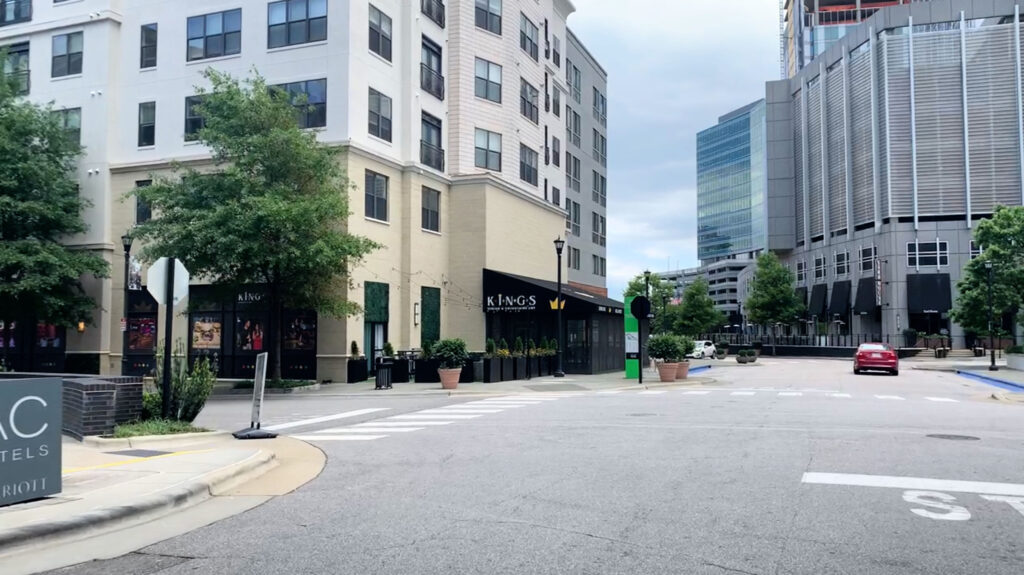
In North Hills you’ll find many international brand stores like Anthropologie, Vineyard Vines, Lilly Pulitzer, Bonobos, and Peter Millar along with local boutiques like Liles and Vermillion.
Mall Shopping
Crabtree Valley Mall and Triangle Town Center are fairly typical enclosed malls. Belk and Macy’s anchor Crabtree and Saks and Dillards anchor Triangle Town Center. And if you need a big box store. . . we’ve got plenty of those. . . all over the place.
Things to Do
So many people who have moved to Raleigh, NC have told me they are looking for a quieter lifestyle and a slower pace of life. I think that is true of Raleigh, comparatively speaking. It’s quieter than Miami, but that doesn’t mean there isn’t anything to do.
We Have Sports in Raleigh
If your idea of relaxing is taking in a game, you’ve got some options in Raleigh. The Carolina Hurricanes are the only major league professional sports team in the Triangle area. But living in Raleigh, NC doesn’t mean you have to give up going to the games throughout the week.
Check out these sporting events in 2024.
For a relatively small market audience, the Hurricanes have developed some very loyal fans. The team has developed a reputation for some fun antics after a win. But in reality, college sports dominate the region.
With the Tobacco Road Rivalry between NC State, Duke, UNC Chapel Hill, and Wake Forest, there is almost always a good game happening somewhere in the Triangle. The Durham Bulls AAA baseball team plays just a few minutes away in Downtown Durham.
Several minor league soccer teams are based in Cary, right next door to Raleigh. Raleigh has been lobbying for a Major League Soccer team for years. They are likely to keep trying to bring another major league franchise to Raleigh. If you want professional football, the Carolina Panthers stadium is just a 2.5 hour drive from Raleigh.
Live Music has become a Raleigh trademark
Living in Raleigh, NC gives you great access to live music. There are over 80 live music venues in the area, ranging from large arenas and amphitheaters to classic concert halls and small independent venues. Rolling Stone Magazine called Raleigh “a hotbed of independent music.” The large college student population has helped drive the music scene and we have all benefited!
Major Raleigh venues range from outdoor amphitheaters like Red Hat Amphitheater and Coast Credit Union Music Park at Walnut Creek to the PNC and Dorton Arenas. The Duke Energy Center for the Performing Arts houses the Meymandi Concert Hall, Raleigh Memorial Auditorium and the Fletcher Opera House.
Smaller Music Venues
Some popular smaller venues include the Lincoln Theater, an old movie theater converted into a great music venue, the Pour House Music Hall and Record Shop where you can catch a performance after you have browsed their record store, and Tin Roof Raleigh in the revitalized Glenwood South area.
I don’t think it’s an exaggeration to say that there is a concert somewhere in Raleigh every day of the year. Even during March Madness (which is kind of a big deal around here). The VisitRaleigh.com website is a great resource to see what concerts are coming up.
Nightlife in Raleigh Exists!
Remember when I said that Raleigh was small? When it comes to nightlife. . . it’s still small. At last count, in downtown Raleigh, you can find 56 bars and pubs, 26 cocktail lounges, 9 breweries, 5 dance clubs, 3 sports bars, and 2 wine bars.
Now to be honest, that seems like a lot for Raleigh, but again, if you’re coming from Chicago, New York, or L.A. you might laugh at those numbers.
But Raleigh is growing, who knows what might be around the bend? You can browse the offerings of Raleigh’s night life at the Downtown Raleigh Alliance.
If you’re moving to Raleigh, NC for the nightlife, you’ll probably be disappointed.
Foodies Rejoice!
Enjoying a fabulous meal in a great setting appeals to everyone. But if you’re particular about your food, or setting, Raleigh probably has you covered. Living in Raleigh, NC doesn’t mean giving up your foodie status.
Raleigh is home to some award winning chefs and restaurants. The most famous is the James Beard award winning chef Ashley Christensen and her suite of restaurants like Beasely’s Chicken+Honey and Poole’s Diner.
Raleigh’s food scene has grown up considerably in the last few years, although it was hit hard by the pandemic. Bon Appetit tells you where to eat in Raleigh or, if you want to check out a pretty exhaustive list of Raleigh restaurants you can browse through them here.
Day Trips from Raleigh, NC: Beaches, Mountains, and History
Raleigh’s central location in the state makes it an ideal jumping off point for day trips around North Carolina. Living in Raleigh, NC means quick access to the rest of the state. Here are just a handful to get you thinking about your next weekend trip from Raleigh.
Drive to Beaufort to enjoy a day of shopping and dining in this incredibly quaint coastal town. And while you’re there, take the ferry to Shackleford Banks and explore this island which is home to wild horses that roam free. Beaufort is a 2 hour and 45 minute drive from Raleigh.
Or head to the beaches near Wilmington and check out Fort Fisher, an old Civil War era, coastal fort and the Fort Fisher Aquarium. Raleigh to Fort Fisher is less than 2.5 hours drive.
Tryon Palace in New Bern was the home of British colonial governors in North Carolina and is less than 2 hours from Raleigh.
Hanging Rock State Park in Danbury is also about a 2 hour drive from Raleigh. At Hanging Rock you can get some good views of the Piedmont and the distant Blue Ridge Mountains. You can hike to the waterfalls, camp or fish. It’s a quick way to get your mountain fix!
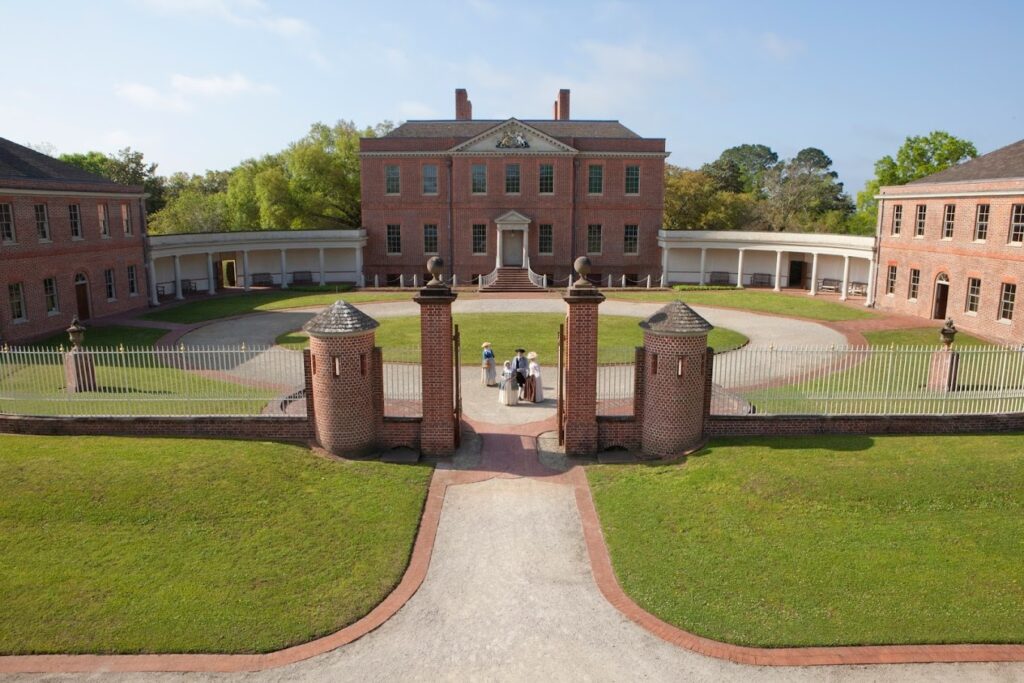
Things to do west of Raleigh
Charlotte, which is only a 3 hour drive from Raleigh, offers you a Panther’s game at Bank of America Stadium, or a trip to Carowinds amusement park.
Old Salem Museums and Gardens is an historic part of the city of Winston-Salem with costumed interpreters that will show you how the Moravians lived in North Carolina’s early history. Think of it as a smaller Historic Williamsburg. It is really a great trip, especially at Christmastime. But for Christmas, get your tickets early! Old Salem is only an hour and 40 minutes from Raleigh.
And of course, the mountains in North Carolina are a perennial attraction for us in Raleigh. When it is hot and humid here, the mountains are cooler and less humid.
Leaf season brings people from all over the east coast to the North Carolina Mountains, but they are a great respite from the stress of modern life any time of the year.
Head to Blowing Rock for boutique shopping, great restaurants, and easy access to the Blue Ridge Parkway and the Moses H. Cone Memorial Park. Blowing Rock is just over 3 hours from Raleigh.
If you live in Raleigh, NC you have Incredible Museums
Because Raleigh is the State Capital of North Carolina, we get to host all the state museums. The exhibits at the North Carolina Museum of Natural Sciences in downtown Raleigh will keep you and your little ones occupied all day long (and they will love the life-sized dinosaur, whale skeleton, and all the live animals)!
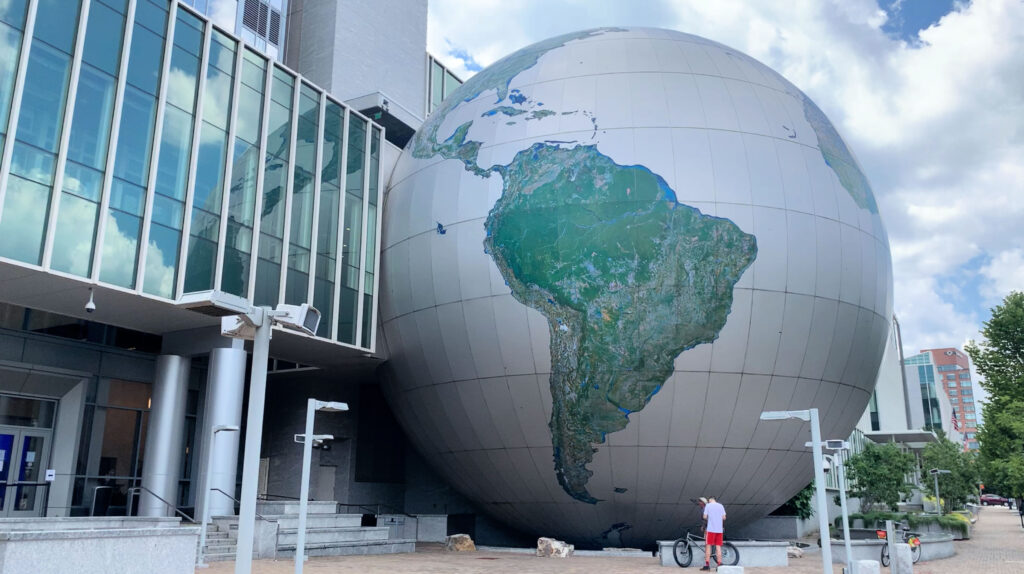
The North Carolina Museum of History with its every-changing exhibits will give you a remarkable glimpse into the fascinating history of North Carolina. It is never the same place twice! But Raleigh has more than just the big state museums. Smaller local museums and exhibitions are all around.
Marbles Kid Museum, also in downtown Raleigh, is the go-to place when kids need to explore. It is all hands-on!
And the North Carolina Museum of Art not only has holdings from Italian Renaissance paintings and Greek sculptures to Americana and modern art, it also boasts a 164 acre museum park with dozens of large art projects displayed along the paved walking paths. Oh, and it also has an event amphitheater as well! You can take a hike, explore the exhibits, and settle in to a concert all in one day, at one place.
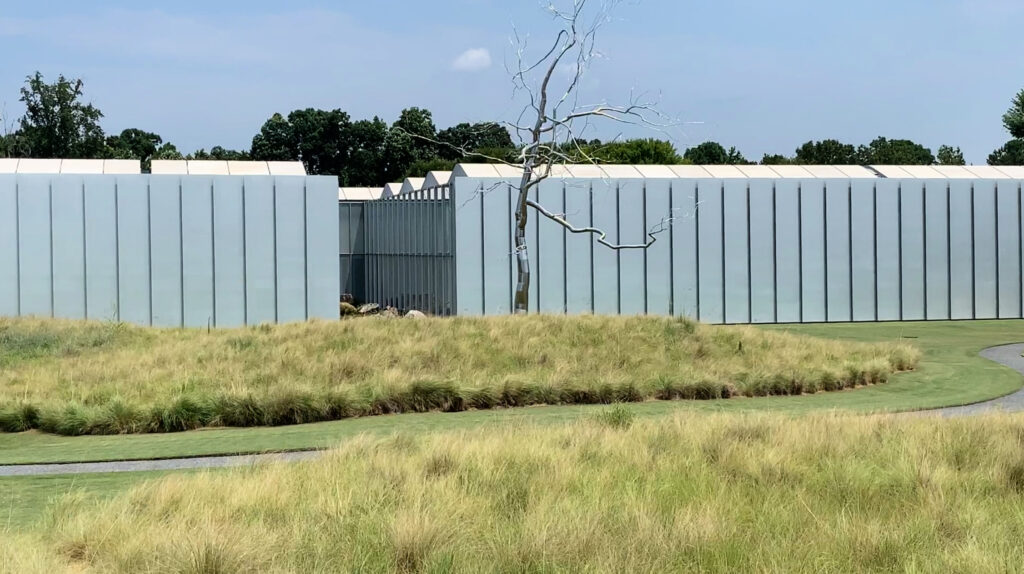
To learn more about Raleigh museums, you can read our post here.
Raleigh, NC’s Must Do Events
One of the best reasons to move to Raleigh is all the local events! There’s always a lot going on in Raleigh from concerts to festivals and even more when you consider all the events that the towns surrounding the city host each year.
Every town has its own celebrations, but some small town attractions bring people in from around the Triangle.
In August, Cary hosts Lazy Daze an annual arts and crafts fair, Apex hosts its music and barbeque PeakFest in May, and the town of Wendell turns on the Christmas lights for Wendell Wonderland in December.
Major Events
But as cool as these are, they pale in comparison to big Raleigh festivals like the Hopscotch Music Festival, a three day event in downtown Raleigh showcasing over a 100 bands each year in a wide variety of genres across a wide variety of venues.
If craft beer is your thing then you can’t miss Brewgaloo. Brewgaloo is a two day craft beer festival in Raleigh which is the largest of its kind in North Carolina and the second largest in the nation.
If you want to see what’s coming up in Raleigh in 2024, check out this list.
Unique to Raleigh
If you are going to be living in Raleigh, NC there are two smaller events that you should really know about. First is the Krispy Kreme Challenge. The Krispy Kreme Challenge was started by a handful of NC State students and has grown into a city-wide event. All you have to do is join the throng of runners on a cold February morning at the NC State Bell Tower, run 2.5 miles to the Krispy Kreme on Peace Street, eat a dozen donuts, and then run the 2.5 miles back to the Tower, in under 1 hour. This one really illustrates Raleigh’s joint commitment to healthy exercise and fried sugar.
The second Second is the Got to Be NC Festival in the spring. While the State Fair in October brings over a million people through the gates, the smaller Got to Be NC Festival brings the same fair vibe, but without the overwhelming crowds. There is still fair food, and rides, and animals, but more on the level of a county fair. All the fun, without the crowds! You might run into us there.
Raleigh was ranked in the top 25% of the most fun cities in America by Wallethub, who analyzed things like the number of parks, festivals and nightlife, as well as the cost to participate in the fun.
